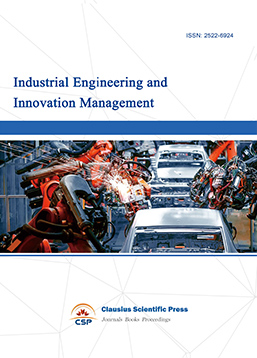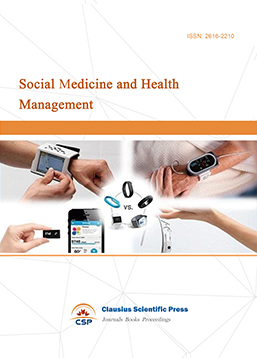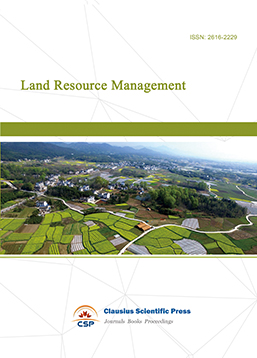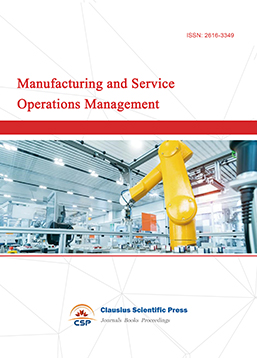China-Russia-Mongolia Economic Corridor High-Quality Promotion of Strategic Positioning and Strategies for Central and Inner Mongolia
DOI: 10.23977/agrfem.2021.040113 | Downloads: 44 | Views: 2372
Author(s)
Siqin Gaowa Liu 1,2
Affiliation(s)
1 Management School of Inner Mongolia Minzu University, Tongliao, Inner Mongolia 028043, China
2 Social Humanities School of Mongolian National University of Education, Ulaanbaatar, 210648, Mongolia
Corresponding Author
Siqin Gaowa LiuABSTRACT
The construction of the China-Russia-Mongolia Economic Corridor is an important part of the “One Belt One Road” strategy proposed by my country to cater to the international background and the new economic normal. It is an important measure to achieve regional cooperation and promote relations with neighboring countries. In September 2014, President Xi Jinping proposed to build the China-Mongolia-Russia Economic Corridor during a meeting with the heads of state of Russia and Mongolia, which received a positive response from the heads of state of Russia and Mongolia. Inner Mongolia is an important region for my country’s northward reform and opening up. At the same time, it borders Russia and Mongolia. The three countries have established a stable cooperative relationship for a long time. In particular, my country’s high-quality promotion of the construction of the China-Russia-Mongolia Economic Corridor provides a new important for further cooperation between the three countries.
KEYWORDS
China-russia-mongolia economic corridor, Inner mongolia, Strategic locationCITE THIS PAPER
Siqin Gaowa Liu. China-Russia-Mongolia Economic Corridor High-Quality Promotion of Strategic Positioning and Strategies for Central and Inner Mongolia. Agricultural & Forestry Economics and Management (2021) Vol. 4: 69-79. DOI: http://dx.doi.org/10.23977/agrfem.2021.040113.
REFERENCES
[1] Zhao Lei. The rise of civilization in China along the Belt and Road. CITIC Publishing Group, pp.124-128,2015
[2] Wang Yiwei. “One Belt One Road”: Opportunities and Challenges. People's Publishing House, pp87-98,2017
[3] Lei Xingchang, Li Yangyang. Research on the Geopolitical and Economic Relationship between China and Northeast Asia in the 21st Century [J]. Northeast Asian Economic Research, vol.4no.2,pp.51-62,2020
[4] Li Guoxuan, Yan Shuangwu. The Northeast Asian Maritime Security Cooperation Dilemmafrom the Perspective of Regional Public Product Supply. Teaching and Research, vol.7,pp. 59-67,2019
[5] [Mongolia] Bazar. China-Russia Trade and Economic Integration,China-Mongolia-Russia Think Tank International Forum, vol.6, pp.154,2016
[6] Tang Xiaodan. Analysis of the status quo and prospects of the construction of the China-Mongolia-Russia Economic Cooperation Corridor ,Foreign Economic and Trade Practices, vol.6,pp. 18,2017
[7] Chen Guotang, Zhang Jin. “China-Mongolia-Russia Economic Corridor”: Prospects and Analysis of Complementary Economic and Trade Cooperation,Northern Economy, vol.10,pp. 20-23,2017
[8] [Russia] Ostrovsky, Zhang Mei. The position and role of economic and trade relations between the Russian Far East and Northeast China in the Silk Road Economic Belt ,Siberian Studies, vol.4,pp.8,2017
| Downloads: | 6628 |
|---|---|
| Visits: | 263591 |
Sponsors, Associates, and Links
-
Information Systems and Economics

-
Accounting, Auditing and Finance

-
Industrial Engineering and Innovation Management

-
Tourism Management and Technology Economy

-
Journal of Computational and Financial Econometrics

-
Financial Engineering and Risk Management

-
Accounting and Corporate Management

-
Social Security and Administration Management

-
Population, Resources & Environmental Economics

-
Statistics & Quantitative Economics

-
Social Medicine and Health Management

-
Land Resource Management

-
Information, Library and Archival Science

-
Journal of Human Resource Development

-
Manufacturing and Service Operations Management

-
Operational Research and Cybernetics


 Download as PDF
Download as PDF